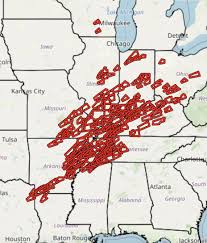Understanding Severe Thunderstorm Warnings: A Guide

Introduction
Severe thunderstorm warnings are critical alerts issued by meteorological authorities to inform the public of impending dangerous weather conditions. These warnings aim to save lives and minimize property damage by providing timely information about potential severe thunderstorms that could bring heavy rain, damaging winds, hail, and even tornadoes. As extreme weather events become more common due to climate change, understanding these warnings is essential for safety.
The Current Situation
Recently, the Indian Meteorological Department (IMD) issued several severe thunderstorm warnings across various states, including Maharashtra, Gujarat, and parts of North India. A powerful weather system has been moving across the northwest region, leading to intense storms that could result in localized flooding and disruption of essential services. According to meteorological data, conditions are ripe for severe thunderstorms over the next few days, emphasizing the importance of staying updated on weather forecasts.
What to Expect During a Severe Thunderstorm
Severe thunderstorms are characterized by heavy rain, strong winds that can exceed 60 miles per hour, and hail that can cause significant property damage. Lightning poses additional risks, resulting in wildfires and power outages. During such events, it is advisable to secure outdoor objects, avoid travel if possible, and stay indoors until the storm passes. The IMD urges residents in affected areas to remain vigilant and regularly check updates regarding the weather situation.
Safety Measures to Follow
When a severe thunderstorm warning is issued, it is important to take safety precautions seriously. Here are some tips:
- Stay indoors: Avoid going outside during a storm.
- Heed official alerts: Follow warnings from local authorities and the IMD.
- Secure property: Bring in or tie down outdoor furniture and other objects that might be blown away.
- Emergency kit: Have an emergency kit prepared with essential items like water, non-perishable food, and a flashlight.
Conclusion
As severe weather continues to pose threats across various regions, understanding severe thunderstorm warnings becomes increasingly important. By being informed and prepared, individuals can protect themselves and their property during these potentially dangerous events. As expert forecasts indicate an uptick in severe weather activity in the coming years, it is crucial for communities to enhance their preparedness plans and respond effectively to severe weather alerts.


